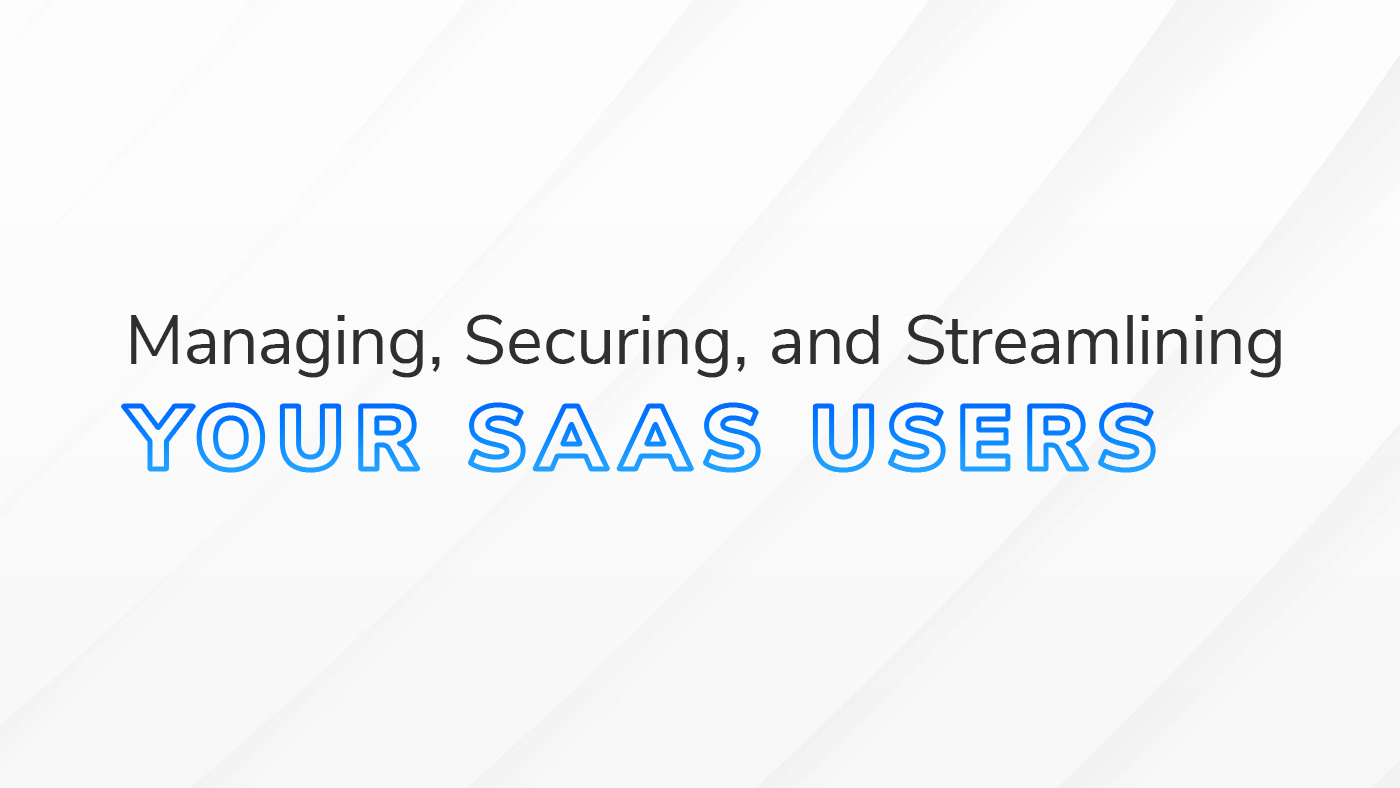SaaS User Management Best Practices
- Author: Evan Cole, Engineering Services Manager - Managed Services

By 2025, 85% of all business applications will be delivered through the cloud.
While Software-as-a-Service (SaaS) offers numerous benefits, managing the influx of users in your company across a multitude of SaaS applications can be a complex and time-consuming challenge.
This article explores why it is important to effectively manage your SaaS users, best practices and valuable strategies to help you navigate your SaaS environment.
The Importance of SaaS User Management
Managing users across all your organization’s SaaS applications—100+ applications on average—probably feels like a full-time job. More than just keeping things organized, effective SaaS user management is critical for a lot of other reasons:
- Security and Compliance: Protecting sensitive data from unauthorized access is vital. Effective user management makes sure that only the right people and applications have access to the right data, reducing the risk of breaches. It also helps your organization meet regulatory standards like GDPR and HIPAA, avoiding potential fines and legal issues.
- Operational Efficiency: When users have seamless access to the tools they need, they can perform their tasks without unnecessary barriers. This efficiency extends to your IT team as well. Good user management processes reduce their manual workload, freeing them to focus on more strategic initiatives.
- Cost Management: 53% of SaaS licenses go unused! That can be easily rectified. Effectively monitoring and managing software licenses prevents you from paying for those unused licenses. Proper resource allocation optimizes investments and minimizes waste.
- User Experience: Quick and efficient onboarding, coupled with reliable access to applications, boosts your user satisfaction and productivity. Happy users = productive users.
- Scalability: Ensuring your SaaS applications can grow with your organization keeps your management processes adaptable and flexible.

Best Practices for Effective SaaS User Management
Great SaaS management doesn’t occur overnight. It will take time, effort, commitment, and in many cases, additional tools. Here are six best practices to improve your SaaS user management:
- Invest in a Good SaaS User Management Solution: Using a centralized platform to manage all your SaaS applications is one of the most effective ways for you to get a handle on your SaaS environment. In fact, we’d argue that you can’t properly manage all your SaaS users and tools without one. It simplifies control and enhances security by standardizing procedures for onboarding, offboarding, and access management—and throws a light on Shadow IT.
There are a lot of SaaS Management platforms out there, varying in use-case, functionality, and cost. Make sure you take the time to research which solution best meets your needs.
- Use Role-Based Access Control (RBAC): Clearly defining user roles and assigning permissions based on these roles allows users to have the appropriate level of access without having to configure permissions manually. Your finance team should have access to financial records and the appropriate SaaS tools for those purposes, but the marketing team probably shouldn’t.
- Automate Routine Tasks: Automation is your friend. Automating tasks like user provisioning and de-provisioning not only saves time but also reduces errors. Integrating your user management system with HR databases ensures that user information is always up-to-date.
- Enforce Strong Authentication: Security starts with authentication. Implementing MFA adds an extra layer of security by requiring users to verify their identity through multiple methods. Single-sign-on (SSO) simplifies the login process, reducing password fatigue and enhancing security.
- Regular Audits and Access Reviews: Regularly reviewing user access levels shows which permissions are current and are correctly aligned with user roles. Promptly revoking unnecessary access minimizes security risks.
- User Education and Training: Educating users on security best practices helps users understand how to protect their credentials and recognize potential threats. Tailored training programs address the specific needs of different user roles.
- Monitor and Respond to Threats: Real-time monitoring tools are key in detecting and responding to suspicious activities. Configuring alerts for unusual behavior enables quick action to mitigate risks.
While following these best practices significantly enhances your SaaS user management, partnering with a managed SaaS provider can offer additional benefits, allowing you to shift your time and focus on the things that accelerate your business growth.
- Expertise in Automation: Managed providers help set up and optimize automation tools, ensuring integration and efficient user management.
- Enhanced Security Measures: A good managed SaaS partner brings advanced security solutions tailored to your needs, ensuring strong protection for your data.
- Comprehensive Access Reviews: Managed providers conduct regular thorough access reviews and audits, keeping your user management practices healthy and compliant.
- Continuous Monitoring and Support: With round-the-clock monitoring and support, managed providers are able to quickly address potential threats and issues.

From Chaos to Control: Mastering SaaS User Management
By implementing the strategies outlined in this article, it is possible to transform your SaaS user management from cumbersome to streamlined.
Centralized management, automation, robust authentication, regular audits, user education, and threat monitoring all contribute to a secure and efficient SaaS environment.
These practices will establish a strong foundation, but partnering with a managed SaaS provider can provide additional expertise and support. This allows you to harness the full potential of your SaaS products and focus on core business initiatives.
To learn more about how HBS can help you manage all your SaaS users and tools, contact HBS today.






